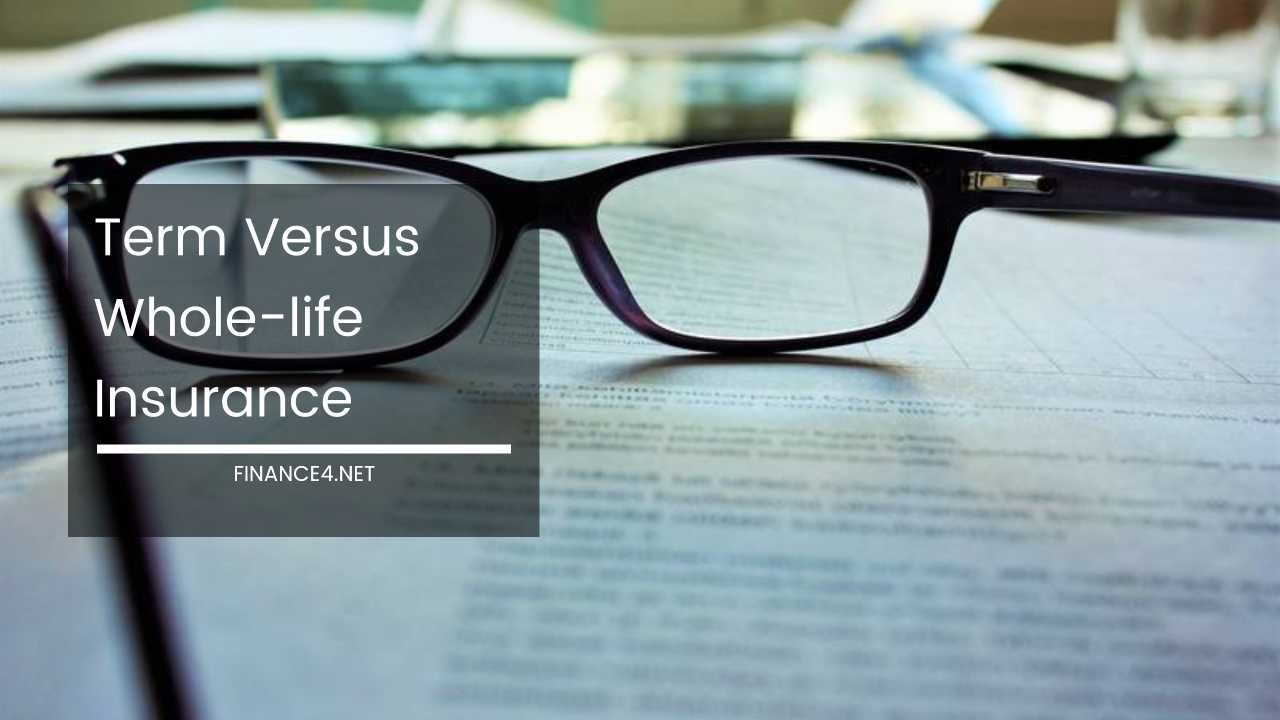Term Versus Whole-life Insurance

Term vs. Whole Life Insurance: Unpacking the Essentials for Financial Security
Life insurance can feel like navigating a financial labyrinth. But understanding the core offerings of term and whole life insurance is crucial for building a secure future for your loved ones.
This comprehensive guide delves into the key features, advantages, and drawbacks of each policy type, empowering you to make an informed decision.
Term Life Insurance: Affordable Protection When You Need It Most
Term life insurance, as the name suggests, provides coverage for a specified period, typically ranging from 10 to 30 years.
Think of it as a safety net – if you pass away during the policy’s term, a death benefit is guaranteed to your beneficiaries.
This benefit acts as a financial cushion, helping your loved ones cover expenses like mortgages, college tuition, or everyday living costs during a difficult time.
The Allure of Term Life:
- Cost-Effective Champion: Term life insurance reigns supreme in affordability compared to whole life policies. This makes it an excellent choice for young families or individuals on a tight budget who prioritize death benefit protection during crucial life stages like raising children or paying off a mortgage.
- Flexibility for Changing Needs: Term life allows you to tailor coverage to your evolving needs. You can choose a term length that aligns with your financial obligations, such as a mortgage payoff timeline or your children’s dependency period. Many term life policies also offer renewability options, allowing you to extend coverage at adjusted rates, providing peace of mind as your circumstances change.
- Simplicity at its Finest: Term life is a straightforward insurance product, solely focused on providing a death benefit. There are no complexities involved, making it easier to understand and manage within your overall financial plan.
Understanding the Limitations of Term Life:
- Limited Coverage Window: Term life only pays out if your death occurs within the specified term. If you outlive the policy period, the coverage terminates, and no payout is received. This is a key consideration, especially if you anticipate needing long-term coverage.
- Renewability Challenges: Renewing a term life policy at the end of the term can be expensive, especially if your health has declined. The insurance company will re-evaluate your health status, and premiums can rise significantly.
- No Cash Value Accumulation: Term life policies do not build cash value. The premiums you pay go towards the cost of coverage, with no savings component. This might not be ideal if you’re looking for a financial product that offers dual benefits of protection and wealth accumulation.
Whole Life Insurance: A Blend of Protection and Long-Term Growth
Whole life insurance, a type of permanent life insurance, offers lifelong coverage as long as you keep up with premium payments. It combines the death benefit feature of term life with a cash value component.
A portion of your premiums is allocated towards building cash value, which accumulates over time and can be accessed through loans or withdrawals.
The Advantages of Whole Life Insurance:
- Guaranteed Peace of Mind: Whole life provides a sense of security knowing your loved ones will receive a death benefit, regardless of when you pass away. This can be particularly valuable if you have young children who will depend on this financial support in the future.
- Cash Value for Future Needs: The cash value component in whole life grows over time, potentially offering a source of supplemental income during your retirement years. You can borrow against this cash value or withdraw it for various needs, providing financial flexibility. This can be helpful for unexpected expenses, down payments, or educational needs.
- Predictable Premiums for Long-Term Planning: Unlike term life, whole life premiums remain fixed throughout the policy. This stability can be beneficial for long-term financial planning, allowing you to budget effectively for the future.
Things to Consider Before Choosing Whole Life:
- Higher Initial Investment: Compared to term life, whole life insurance premiums are considerably higher due to the additional cash value benefit. This can be a strain on your budget, especially if you’re just starting out.
- Lower Return on Investment: The growth rate of the cash value in whole life policies is typically modest compared to other investment options like the stock market. It’s important to understand that whole life is not primarily an investment vehicle.
- Reduced Flexibility with Cash Value: Accessing the cash value through withdrawals or loans can reduce the death benefit payout for your beneficiaries. Additionally, there may be fees or tax implications associated with accessing the cash value. Careful planning is needed to ensure you don’t erode the death benefit you’re building for your loved ones.
Choosing the Right Insurance for Your Journey
The ideal choice between term and whole life insurance hinges on your specific needs and financial goals. Here’s a breakdown to help you decide:
Term Life is Your Champion if:
-
- You need affordable coverage for a specific period, such as raising children (20-year term) or paying off a mortgage (30-year term).
-
- You prioritize maximizing your current financial protection on a budget. The money saved on premiums compared to whole life can be invested elsewhere, potentially offering a higher return on investment.
- You plan to invest elsewhere to build wealth for retirement. Term life allows you to focus your resources on building a robust investment portfolio for your future.
-
Whole Life Shines When:
- You desire lifelong coverage and want to leave a guaranteed death benefit for your beneficiaries, no matter when you pass away. This can be especially important for families with special needs dependents who may require lifelong financial support.
- You value the guaranteed cash value component and its potential for future financial needs. This can be a source of supplemental retirement income, a safety net for emergencies, or a funding source for future goals like education expenses for grandchildren.
- You prioritize predictable premiums and a long-term financial planning tool. Whole life premiums lock in at the time of purchase, offering stability in your budgeting for decades to come.
Beyond the Basics: Additional Considerations
- Age is a Factor: Generally, younger individuals benefit more from term life’s affordability. As you age and your financial priorities shift towards wealth preservation and legacy building, whole life might become more relevant.
- Health Conditions Play a Role: Pre-existing health conditions can affect both your eligibility and premium costs for either policy type. It’s important to be honest about your health during the application process to ensure you get approved for the right coverage at a competitive rate.
- Financial Goals Drive Decisions: Consider your overall financial plan. If you have a robust investment strategy with a diversified portfolio, term life might suffice for your death benefit needs. If you lack alternative savings avenues, whole life’s cash value could be appealing, offering a guaranteed growth component alongside your death benefit protection.
The Power of Professional Guidance
Choosing the right life insurance can feel overwhelming. Consulting with a qualified financial advisor can be invaluable.
They can assess your individual needs, risk tolerance, and financial goals to recommend the most suitable policy type and coverage amount.
Final Thoughts: Building a Secure Future
Both term and whole life insurance play valuable roles in securing your loved ones’ financial well-being.
By understanding their unique features, advantages, and limitations, you can make an informed decision that aligns with your current and future financial goals. Remember, there’s no one-size-fits-all answer.
The best choice depends on your unique circumstances. With careful planning and professional guidance, you can ensure your loved ones are protected no matter what life throws their way.



